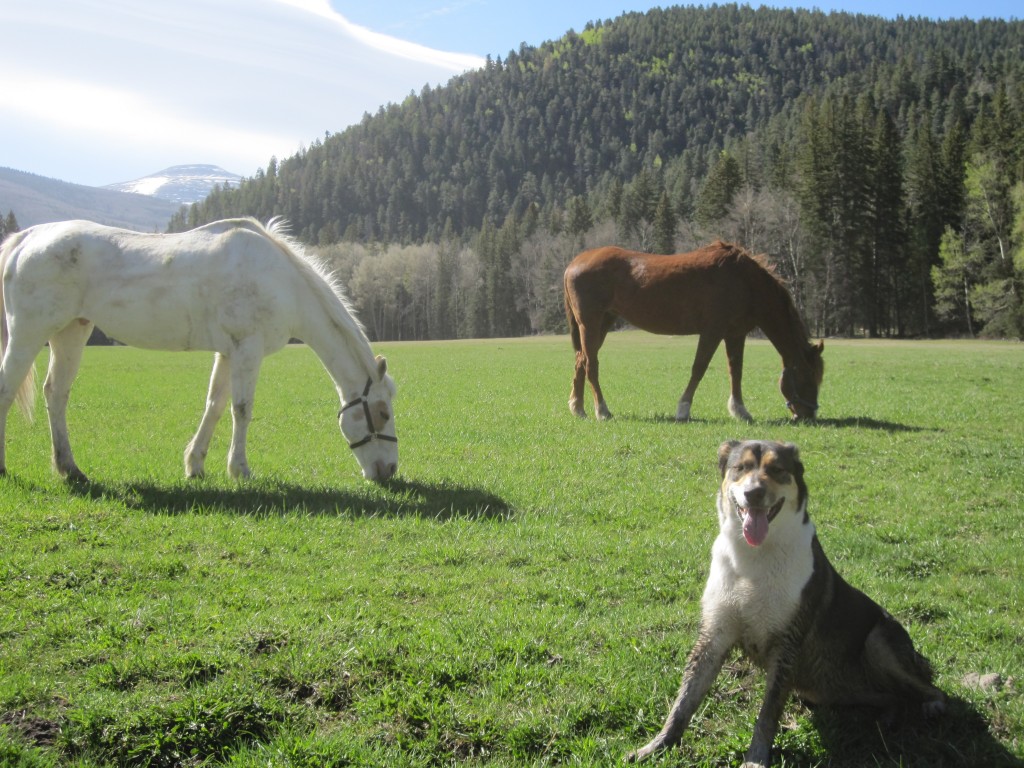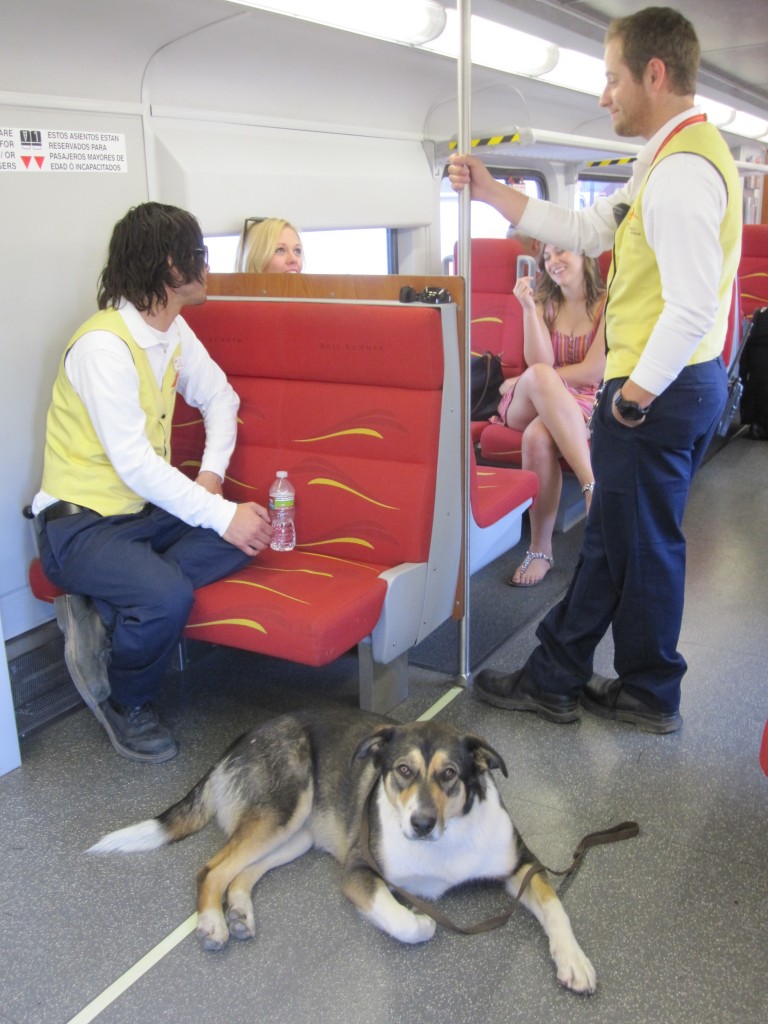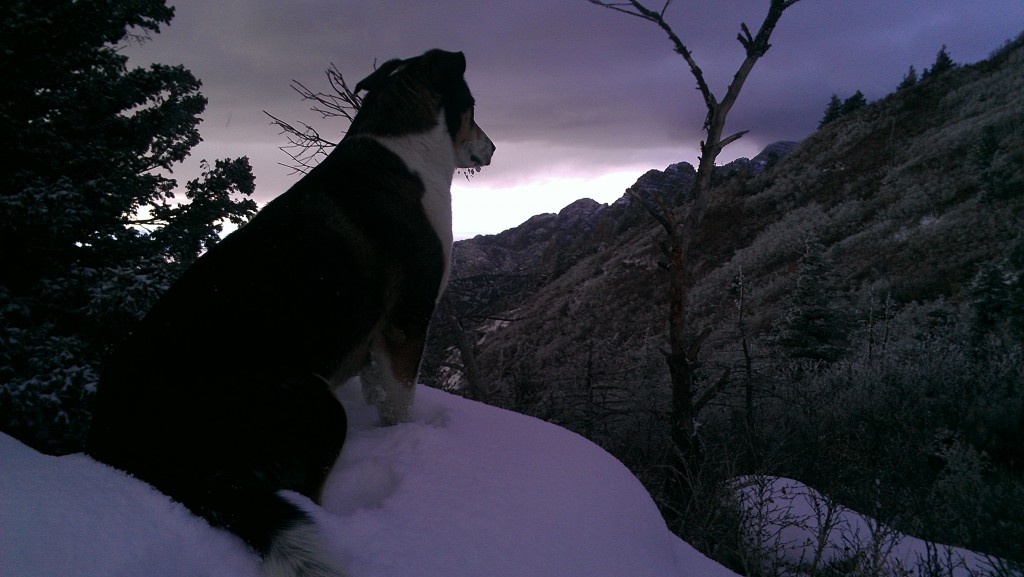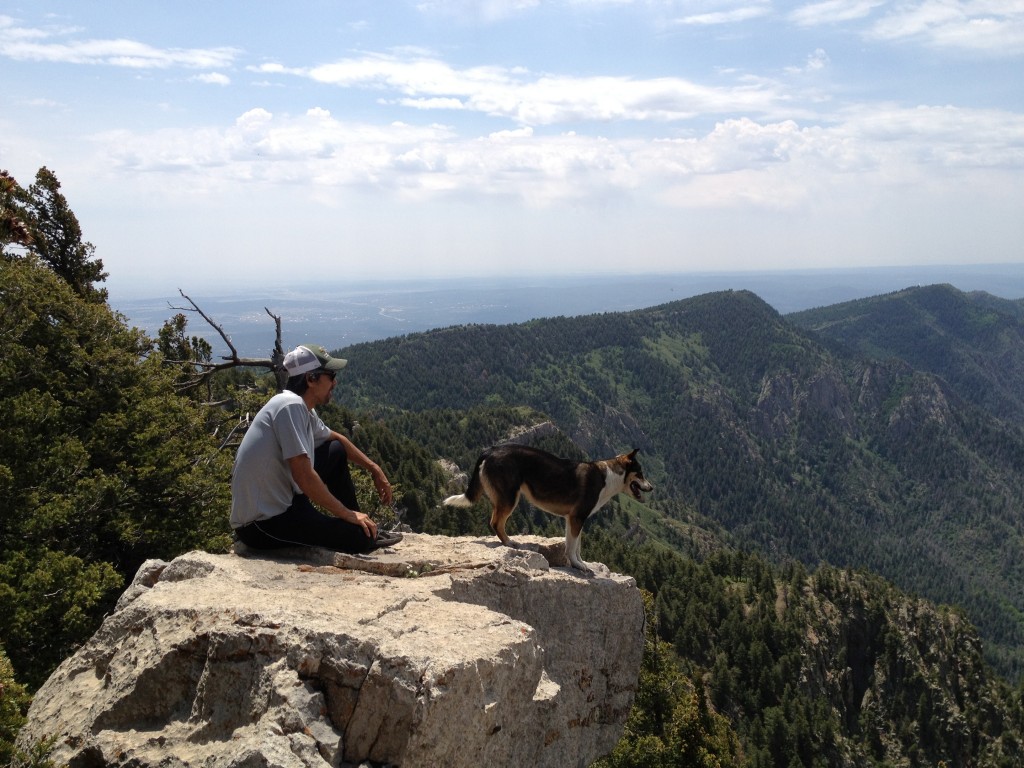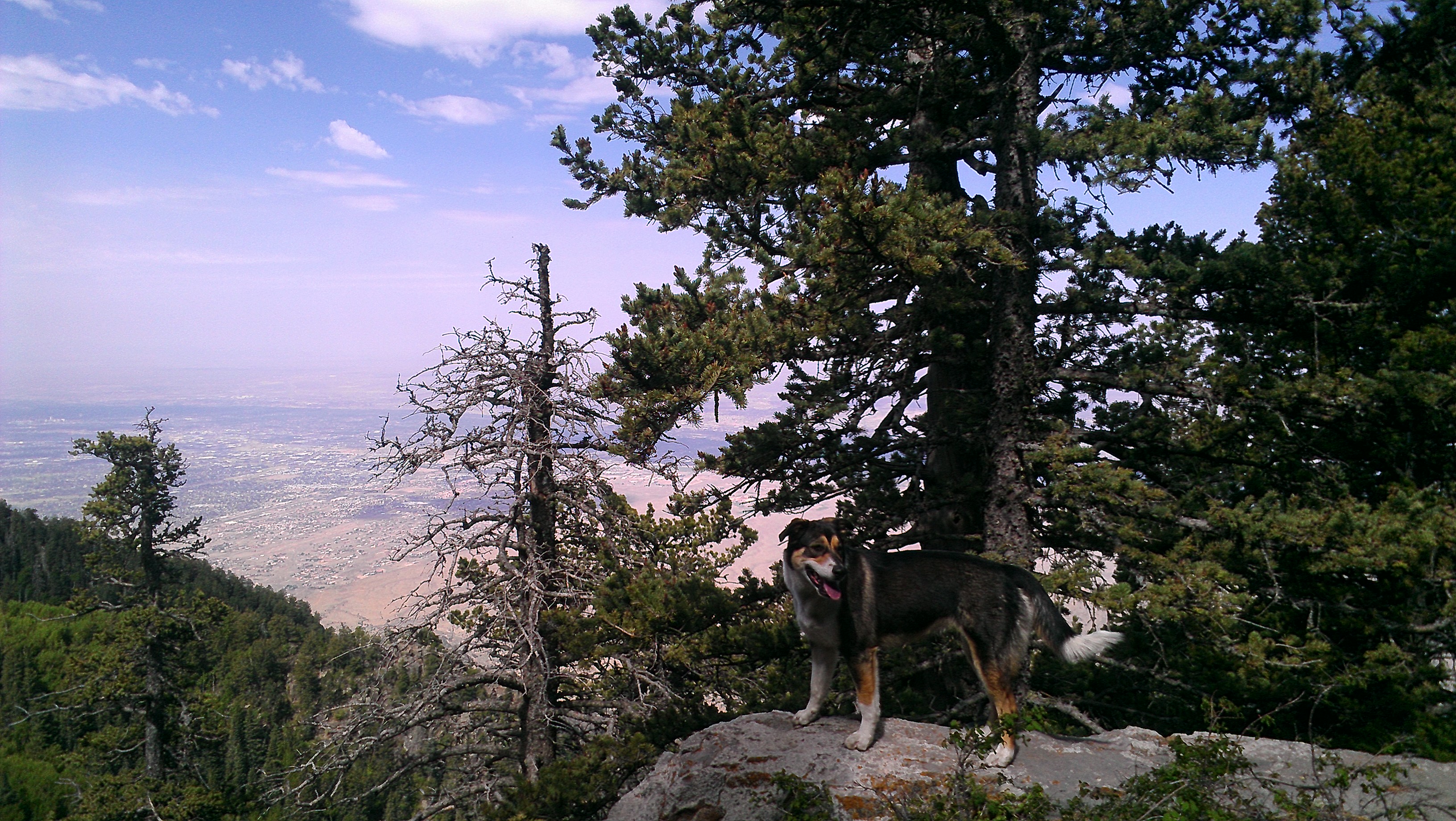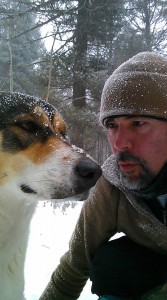Why are veterans and dogs such a good match? For one, they share a lot in common. Dogs are known for their loyalty. So, too, are veterans. Dogs are tough and energetic. This is often the case with veterans. Dogs are empathetic and affectionate and possess senses that eclipse our own, and live in a world that is largely unknowable to us–yet they do not judge us. This is often what a veteran needs, as veterans often feel their world is separate and apart from the society they inhabit. Dogs listen to us when we need listening to. They will sleep at the side of our bed and not mind if we reach out to them in the middle of the night and hold them close. They will go to the ends of the earth for us and with us. They will love us. They will return our affection a thousandfold. They will reawaken our heart if it is numb or asleep. They will remind us to care for them just as we must care for our own heart and spirit. They will embody the spirit that needs tending. They will help us to live with our past and make our lives more joyful. For these reasons and many more, dogs and veterans are a good match.
After receiving a couple requests for guidance on training from other veterans, I am prepared to offer up what I have learned. I have a lot to say on the subject. The first thing I want to address is suitability and commitment. Many veterans get connected with dogs that come to them already trained. There are long waiting lists for these dogs, and if you can afford to wait, perhaps this is your best option. Other veterans go through training programs with their dogs. There can be long waiting lists for these programs as well. Regardless of how you get connected with your dog, you have to commit to that animal with all your heart and soul. If you don’t think you want to do that, or if you’re not ready for that, just wait. If you are numb and indifferent to life, start with baby steps.
My own experience started with Listening Horse, a horse therapy program in Santa Fe. In that program, I was not responsible for the health and welfare of the animals, so I was not a risk to the animals. If you get a dog and you are unable to commit to it, unable to care for it, unable to be responsible for it, then you are just making things worse. It is bad enough what you are enduring, but as a first step you should strive to not inflict additional suffering on others. So baby steps. Start with hanging out with birds in the park, or ducks and geese at the pond. Or horses like at Listening Horse. Wait until you feel a kindness in your heart to these animals. Wait until you feel some kindness in your heart to the trees. Wait until you feel some bloom in your heart for life. Wait until you can sit on a park bench and feel some empathy for a dirty pigeon with a busted wing. Then something will come to you for you to love and care for that will embody your own spirit and serve as a spark for your own healing.
I cannot stress enough, if any doubt exists about your readiness for a dog in your life–whose welfare you must be wholly committed to–then start with an organized program, such as a horse therapy program, where you are not responsible for the health and welfare of the animal. Let a professional work with you and assess your progress over time.
When I was told by Listening Horse that I should “get a horse,” this showed that I was not only responsible enough to be trusted with another being, but that an animal companion could continue to be of great assistance to me. This cannot be said of everyone, but once those words were uttered, everything seemed to fall into place. Wait until you are in a place in your life where a person who knows and loves horses, or any other wild beasts, can openly advise you to “get a horse.” This will mean that the time is right.
Part of our ability to bond with animals is through our empathy, being able to share in the life experience of others, not just humans. For many veterans, our empathy has been laid to waste. We have had to cauterize our empathy in order to function and accomplish our mission. To live without empathy is a dark prospect, but many do so, and many do so who know nothing of war or pain or darkness or suffering.
These words and this guidance are for those for whom even a few blades of grass possess a sacred meaning, those who have lost their way and struggled, those who have known loss and pain, those who wish to come back into harmony, who seek harmony, who wish to not be the cause of more pain but the cause of joy.
If this applies to you, please continue reading.
The following are not firm rules, but rough guidance. From a practical standpoint, a veteran’s dog should be anywhere from 40-70 pounds. Since this is an animal that will be traveling with you, never leaving your side, a very large dog, such as a mastiff or great dane, is not a good choice. Likewise, very small dogs, toy dogs for instance, are often neurotic and unmanageable. The last thing a veteran needs to be around is a yapping dog.
Breed is important as well as size. Dogs bred for aggression and fighting should be avoided. If your desire a pit bull or rottweiler or akita so you can menace people, and keep the world at bay, you are not ready for a dog and this guide isn’t for you. Spend some more time in the park. The key to a good dog for a veteran is a gentle spirit. This does not mean a dog that doesn’t know how to defend itself, or come to your defense, or be alert and watching out for you. But dogs that have been bred for aggression and fighting are a poor choice. For this reason many gentle breeds, such as labs and retrievers, are paired with veterans. They are especially good with children and the public. Personally, I like a mixed breed, commonly known as a “mutt,” because they tend to not suffer the ills of inbreeding that many breed dogs suffer from. Be that as it may, you may not have a say in how your dog comes to you. And, if it is a pup, particularly a mixed breed pup, it may be difficult to estimate its eventual size and disposition. The key is that you feel a bond with the animal and you commit yourself to her, and you stick by her.
Good trait to look for in a puppy: thoughtfulness. This can often be observed by how the pup deals with a strange situation. Does it sit down and seem to study what is happening? Or does it just blunder into any situation? The more thoughtful the animal, the better. Many veterans who could benefit from a dog have poor judgment and are given to impulsiveness. A thoughtful companion that looks before it leaps is a good choice to compensate for this.
Female or male? Again, no firm rules, but I prefer a female. Why, I don’t know. Maybe it is just my imagination that they are less aggressive and more nurturing, but even if the bias is nominal, it is still worth considering. Again, how the dog enters our life may be outside of our control. Male or female may be immaterial. The main thing is that we commit fully to the animal
Training can begin as early as 8 weeks. One of the reasons it is wise to seek a formal training program is that typically veterans are hard-pressed to summon the patience that the job requires. They may be prone to a violent temper and easily frustrated. Losing your temper at your animal is outrageous and must be avoided at all costs. When you consider what your assistance animal is capable of in terms of helping you, and when you consider how damaging are the forces of distrust and betrayal, you will be wise to use every coping mechanism at your disposal to NEVER LOSE IT with your animal.
Training takes time. It takes patience. It takes commitment. It is often said that training never ends. Even when your dog is out and about in the world with you, it is always in training. Although it is easiest to train a pup, a patient and persistent trainer can make good headway with older animals. For this reason, there are training programs for veterans that only work with rescue dogs from animal shelters. If you are interested in going this route, and you are unable to wait for a slot in such a program, see if a dog training organization in your area will at least assist you in making an appropriate selection at your animal shelter.
Critical commands to focus on in the early going are “DOWN” and “STAY” and “COME. In fact, if these three commands are all the commands your dog ever learns, you will be in good standing. You do not have to bark orders at your dog. When you are out in the world, you will want to communicate with your dog in a subtle and peaceful manner, sometimes even in a whisper. Oral commands should be augmented with hand signals. The hand signal for “DOWN” is crouching at the level of the dog and pointing the tips of your fingers with an open palm to the ground. Accompany this hand signal with the verbal command, “DOWN.” Draw out the command so that instead of being a curt command, is sounds like a insistent plea: “Doooowwwwwn.” Initially, no dog will obey you. Going into the down position is a submissive posture. If you observe dogs, you will see when one dog wishes to show passivity and submission to a larger or more aggressive animal, it will grovel and go into something of a down position. For this reason, this is a difficult command for your dog, or any dog, to submit to. For this reason, you will have to complement your commands, initially, with a corrective training collar.
I recommend a plastic collar such as the StarMark plastic training collar. These collars comes in two widths, one for puppies and juveniles, and one for larger dogs. Depending on the ultimate size of your dog, you may be able to merely add links to the small width collar as the dog grows, or you may need to eventually work into the larger size. In any event, links in the collar must be added or subtracted so that it fits correctly at all times. A correct fit should allow several fingers to fit under the collar when it is being worn, yet allow the “teeth” of the collar to be felt when the collar is tightened with a quick tug. This training method may seem cruel, but when done properly, it mimics the corrective nip that a mother administers to her pups when she is raising them. If you have a doubt about the amount of force that you should use (it is a quick and deliberate tug that is desired, followed by an immediate release– NOT a sustained tugging) I recommend that you put the collar on your arm or leg (or even your own neck) and give a few tugs in order to familiarize yourself with what it feels like and the amount of force that seems reasonable. If it hurts some, but not much, (i.e. enough to get your attention), it is probably right.
Note: Any type of training collar you use must ONLY be used during training sessions and under your close supervision. ALWAYS REMOVE THE COLLAR AT ALL OTHER TIMES FOR SAFETY AND COMFORT!
It goes without saying: start with the least amount of force you think is necessary, and then gradually increase using the reaction of the dog as a guide.
Training sessions must be LIMITED in time! Dogs learn best when training sessions are short and immediately followed by play activity (fetch, running around the yard) as a reward.
The last thing you want to do is expect too much too soon, or to keep drilling your animal when they have tired.
5 MINUTES PER DAY IS PLENTY FOR THE FIRST 6 MONTHS!
Try to conduct this training as consistently as possible. This training can be incorporated into your daily walk routine. If you do not already know this, a well-adjusted dog needs to be out and about as much as possible, and not left alone for significant periods during its developmental phase,or any phase for that matter. At a minimum you should plan on walking your dog at least once per day for no less than a solid hour. As your dog, even in this training phase, will be out and about with you, they should be getting adequate exercise and stimulation. Even so, walks are necessary; a dog must interact with and monitor its environment–including other dogs–to be well-adjusted.
A sample training routine for a 10-week old pup could be as follows:
Take the pup to a consistent place. Initially you will want a place with little or few distractions (but not necessarily your backyard). Then, over time, you will want a place with increased distractions, so your dog will have to face those additional challenges while still paying attention to you. Remember, as your dog’s training improves, they will be able to deal with high levels of distraction while still obeying you (i.e. remaining sitting or lying down in any place of your selection while cats go by, clown cars, trains, etc.)
The reason you may not want to use your backyard is that you want your dog’s living area to be associated with only good memories as much as possible. Because training does involve some correction (i.e. mild punishment) it is nice if this can be done not where you live. (Although once your pup starts to catch on, i.e. 2-4 months into training, it is perfectly appropriate to give commands at home as well.)
Authorities are divided on this but I recommend NOT using treats as a training device. Not only is it unhealthy to have a lot of treats, but the dog tends to focus on the treats, and the treats themselves become a distraction. Needless to say, in the real world you will not be going around passing out treats to your dog every time it obeys a command. What works better is a quick “Good dog!” and something of a affectionate pat. Be consistent and judicious with your praise just as you are consistent and judicious with your punishment.
Initially, when the dog knows nothing, you will have to lean more heavily on correction. For instance, you will give the “DOWN” command (hand signal and voice) and the pup will just look at you. How should she know how to act? At this point, and nearly contemporaneously with your command, you will then give a quick firm tug on your lead so that the pup’s head is drawn towards the ground (you can initially then use your hands as needed to get the pup into the down position, drawing out on its front legs, etc.) Starting out, this lead can be just a short piece of 550 chord, 3 or 4 feet is plenty. A lead just long enough for you to be able to tug (4-8 inches) is also appropriate, but will usually be used after you have already made some progression in the training. Earlier on, the longer lead will give you more control. The pup will likely resist you. DO NOT LOSE YOUR TEMPER AND START MUSCLING AND JERKING YOUR PUP AROUND! Remember, your relationship with your animal is about trust and loyalty. It takes time for a dog to learn what it is you want and expect of her. This training is to assist you in moving about the world with your dog. The training is necessary because in order to accompany you in the world, the dog needs to be well-behaved and listen to you. Otherwise, instead of being a calming element, your dog will be a source of anxiety, and even a nuisance and a bother.
Since obeying you does not come naturally to the dog, but must be achieved through consistency and patience over a period of weeks and months of concerted effort, do not expect much for the first handful of training sessions. It is enough that the pup hear and see the commands, and get used to the sound of your voice. Keep in mind that most dogs will want to please you and will learn these basic commands to earn your praise. But this takes time and effort for everyone involved: 1) the dog, through trust and kindness, needs to come to value your praise and 2) needs through time and repetition to come to understand the various behaviors that your commands are meant to elicit. ALL THIS TAKES WEEKS AND MONTHS!
After the training session is over (which might consist of only 5-10 iterations of “DOWN”, with a brief interval of walking between iterations–so the dog is not just getting up and getting down in the same place) it is important to reward (and relax the dog) with a nice play session. Over time, your dog will associate the training session with the play and start to handle the training with greater forbearance and patience, knowing that its patience and effort will be rewarded. Again, this reward does not have to be treats, but a few throws of a stick or ball.
The “STAY” command is very important, and is often trained in conjunction with (and directly following) the “DOWN” command: The hand signal that accompanies this command can be an open palm facing the dog. Initially your dog will not obey this command. When she gets up and moves, lead her to the same spot she was in, and give her a quick corrective tug on the lead. Over a period of weeks and months, the amount of time that the dog can be left in this position will increase. But increase the amount of time slowly and over time. Ten to fifteen seconds in the first month can grow to twenty seconds in the second month and so on. Eventually you will be able to leave your dog in the DOWN and STAY position for an hour or longer. But work up to this slowly and methodically!
(It is important that a correction be delivered close in time to the infraction. It does your dog no good to correct her if you gave her a STAY command and then just left her, and then a half hour later realized that at some point she left the spot where you had ordered her to stay and wandered off to some other place. For this reason, during a training session, you may wish to spy on your dog from a window or through a door jamb so that if and when she gets up and starts to wander off, you can make the appropriate correction IMMEDIATELY.)
REMEMBER: 5 MINUTES OF TRAINING PER DAY FOR THE FIRST 6 MONTHS IS PLENTY!
Every dog is different, just like people. Do not assume that just because one dog learns something in a day, that this will be true for all dogs. If you wonder if you are demanding too much of your pup: STOP! Take a break. Walk away. Every dog is capable of learning, just is every person, but you must be willing to meet the dog on her own terms, work around her own personality and disposition, and RESPECT HER!
What Listening Horse taught me is if you want something to just do your bidding any old time, get an ATV. If you want to know a horse, you have to come to the horse on the horse’s terms. If you want to know a dog, likewise.
In the end, I think I was fortunate that the training program that was available to me had a two year wait. It forced me to become proactive and take some initiative. I pieced material off the internet and from books and came up with my own training program. The reality is, I didn’t have two years to wait around for an opening.
Not covered in this article is crate training, which I highly recommend for house training your pup. Additionally, the crate (with a cloth or blanket draped over it) can serve as a safe and comfortable refuge for your dog. To this day, AB takes her meals in her crate, and I know it is mealtime when she goes in there and lies down.
If at all possible, put in a doggie door wherever you live. A dog cherishes the ability to come and go as she pleases.
Be aware that your dog is really a pup for the first two years of life. Do not have overly high expectations for her. Adjust to her. Make allowances for her. Give her some room for error. She is there not to absorb your damage, but to help you cast it off as best you can. Let her be her wild spirit. Take her to the mountains and let her run free.
Let her be free as often as you can. Don’t put a jingly jangly collar on her. Don’t put any sort of collar on her outside of training. Let yourself run free with her. Beside her. Not leading or controlling, but beside her, like any other wild thing. Care for her and be good to her, watch out for her paws just like you would your own feet, carry a tweezers for thorns and splinters if you are out and about, carry water for her and offer her water often, let her pant and rest in the shade if you are on a trail in the hot sun, take joy in watching her joy, take joy in greeting her in the morning, take joy in sharing with her small scraps of your own food (letting her lick your dish clean for instance, placed in her crate though–don’t feed her from the table as this encourages begging). Share with her the good of her life, and she will assuage the bad of yours. She will calm you when you are upset, comfort you when you are bereaved and lost. Whatever hills and valleys yet lie before you, she will go through them at your side, loyal and steadfast.
Good luck.

